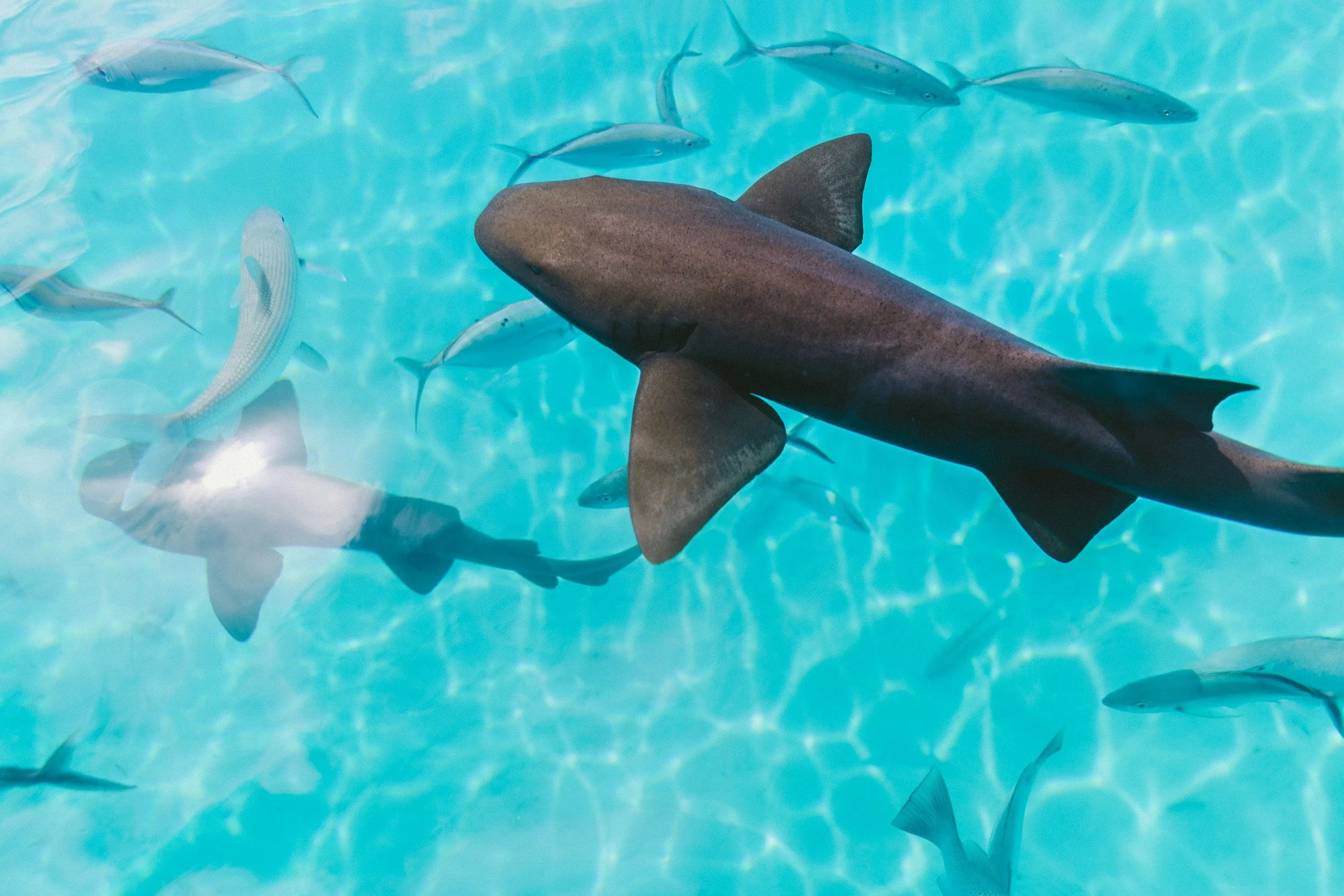
Sharks
Florida Sharks: Conservation, Behavior, and Future Outlook
Sharks are among the most iconic and ecologically significant creatures in Florida's coastal ecosystems. More than 15 species of sharks have been recorded in Florida waters, from the Atlantic Ocean to the Gulf of Mexico. These apex predators perform a very fundamental role in maintaining the balance of marine ecosystems, regulating the populations of their prey, and in ensuring the health of the coral reefs, seagrass beds, and other marine habitats. Nonetheless, many species of shark in Florida face threats resulting from human activities such as overfishing, degradation of habitats, and finning.
Conservation Success and Challenges
There is considerable conservation concern with sharks in Florida, as many species are declining in population. Overfishing and bycatch are considered major threats to sharks. Shark fins in high demand, usually for shark fin soup, have spurred much illegal and unsustainable fishing of these animals. Besides this, the destruction of crucial habitats, such as coral reefs and mangroves, is one of the threatening factors to shark nurseries and feeding areas.
However, Florida has made several steps toward shark conservation, especially through state and federal regulations to protect shark populations. For example, the state of Florida has set in place fishing regulations that restrict the harvest of certain shark species. In addition, organizations such as the Florida Fish and Wildlife Conservation Commission and NOAA Fisheries monitor and protect shark populations through research and conservation programs.
The mainstays of shark protection involve marine protected areas such as the Florida Keys National Marine Sanctuary and Everglades National Park, where damaging human activities, including commercial fishing and boating, are significantly limited. Such sanctuaries provide important refuges for shark species to grow in numbers, without pressures of overfishing and habitat loss.
Despite these efforts, many of the shark species, like the great hammerhead (Sphyrna mokarran) and whale shark (Rhincodon typus), are still vulnerable because of overfishing and illegal trade, and also loss of habitat. Long-term perpetuation of Florida's shark populations calls for ongoing monitoring, stronger enforcement of fishing regulations, and cooperation at higher levels, even between nations.
Shark Species in Florida
Florida has a diverse group of shark species, each with its unique characteristics and ecological role.
1. Bull Shark (Carcharhinus leucas)
Bull sharks are one of the most common species of shark encountered in Florida waters. Considering their ability to survive equally well in fresh and saltwater, these sharks also frequent coastal areas, rivers, and estuaries. They are voracious predators that feed on fish, birds, and small marine mammals.
2. Great Hammerhead (Sphyrna mokarran)
The great hammerhead is one of the most iconic sharks, recognized by its distinctively wide, hammer-shaped head. This species is found in Florida’s warm coastal waters, often near the seafloor. Great hammerheads are solitary hunters, primarily feeding on rays, smaller sharks, and fish.
3. Tiger Shark (Galeocerdo cuvier)
Tiger sharks are large, formidable predators that can be found inside Florida's coastal waters. They have a wide-ranging diet that includes fish, turtles, birds, and other sharks. They also continue to be one of the species in Florida waters that most readily come into contact with the human populous due to their closeness to shore.
4. Nurse Shark (Ginglymostoma cirratum)
Nurse sharks are generally much more docile and can be found in shallow, warm waters; they are bottom-dwellers using their barbels to locate crustaceans, mollusks, and small fish on the ocean floor. Divers commonly observe nurse sharks on coral reefs and among mangroves in Florida.
5. Whale Shark (Rhincodon typus)
The whale shark is the world's largest shark and one of the most awe-inspiring creatures in Florida's waters. Despite their size, whale sharks are gentle filter feeders that consume plankton and small fish. These migratory sharks are occasionally sighted off Florida's coast, particularly in the warmer months.
Behavor and Ecology
Sharks are apex predators, and their role in regulating the populations of other marine species is quite significant. Sharks control the prey species and thereby maintain the balance in the marine food webs to ensure that some species do not become overpopulated and outcompete others. Sharks also have an effect on the health of ecosystems such as coral reefs and seagrass beds by keeping populations of herbivores and smaller predators in check.
Most shark species are highly migratory, traveling across vast areas of the ocean in search of food, to reproduce, or to move between seasonal feeding and breeding grounds. Some species, such as whale sharks, have been known to make very long migrations across large expanses of the Atlantic Ocean.
Sharks possess a wide range of feeding strategies. Some, like the nurse shark, are bottom feeders that hunt near the ocean floor, while others, like the tiger shark and hammerhead shark, are active predators that hunt fish, rays, and other marine creatures. Whale sharks, on the other hand, filter feed, swimming through large schools of plankton and small fish to consume their food.
Sharks are usually slow-breeding and often have protracted gestation periods; this often results in fewer pups produced. This makes them extremely vulnerable to overfishing because populations take a long period of time to recover once declines are evident.
Future of Sharks in Florida
The future of sharks in Florida relies on further success with conservation, more stringent regulations, and raising public awareness. Protection of critical shark habitats, such as coral reefs and estuarine areas, is vital to maintaining healthy shark populations. Further, international cooperation must be undertaken to prevent illegal shark finning and ensure that shark fishing is conducted in a sustainable manner.
Continued research into the behavior, ecology, and migration patterns of sharks is crucial in understanding how best to protect these species. Public education campaigns can help reduce the fear and misconceptions surrounding sharks, emphasizing their role in marine ecosystems and their importance to biodiversity.
With proper management, regulation, and conservation, shark populations in Florida can continue to thrive and remain an integral part of marine ecosystems in the state for generations to come.

